Air travel is an essential in the way we connect with the world, bridging vast distances and bringing people closer together. England is home to some of the world’s oldest airports. In this article, we will explore the 15 oldest airports in England, uncovering their origins, historical significance, and their roles in shaping the nation’s aviation landscape.
England’s Aviation History
England has a storied aviation history that spans over a century. Thus, this history has been marked by innovation, exploration as well as development of aviation technology and industry.
Early Pioneers
Sir George Cayley (1773-1857)
Often regarded as the “Father of Aviation,” Cayley made pioneering contributions to aerodynamics and flight. In 1853, he designed and built a glider that carried his coachman across Brompton Dale, thus marking one of the earliest recorded manned glider flights.
Sir Hiram Maxim (1840-1916)
An American-born inventor who later became a naturalized British subject, Sir Hiram Maxim experimented with powered flight. He also constructed the enormous “Maxim Flying Machine” in 1894, which unfortunately, only made several unsuccessful tethered flights. Despite his failures, Sir Hiram remains an important figure in Britain’s aviation history.
The Wright Brothers’ Influence
While the Wright brothers, Orville and Wilbur, were American, their achievements had a profound impact on aviation in England.
Alliott Verdon Roe (1877-1958)
An English aviation pioneer, Roe was inspired by the Wright brothers’ work. In 1907, he founded the Short Brothers aircraft manufacturing company, which later became one of Britain’s leading aircraft manufacturers.
World War I and Military Aviation
The outbreak of World War I also brought significant advancements in aviation technology.
Established in 1912, the Royal Flying Corps (RFC) played a crucial role in the early days of military aviation. It later evolved into the Royal Air Force (RAF) in 1918. The Sopwith Camel, one of the most famous fighter aircraft of the war, was produced by the Sopwith Aviation Company.
Interwar Period
Even though a lot of development happens during wartime, between the two major wars, there was several development due to the collection of arms.
Formed in 1924, Imperial Airways was the predecessor to British Airways. Thus, it pioneered long-distance commercial air travel in the region and beyond before anyone else, linking the British Empire. Founded by Geoffrey de Havilland, the De Havilland Aircraft Company produced several successful aircraft, including the de Havilland DH.88 Comet, which is a famous long-distance racer.
World War II
World War II was a turning point in aviation history, because Britain, as part of the Allied powers, was heavily involved in the war.
The Battle of Britain in 1940 marked a critical moment in the war. British pilots, flying iconic aircraft like the Supermarine Spitfire and Hawker Hurricane, defended the country against the Luftwaffe. Sir Frank Whittle, an English engineer, developed the turbojet engine during the war, which was a revolutionary advancement in aviation technology.
Post-War Developments
In 1946, the RAF became an independent branch of the British Armed Forces. Thus, it continued to be a pioneering force in aviation. The British Overseas Airways Corporation (BOAC) and British European Airways (BEA) were established to handle long-haul and domestic flights, respectively. Finally, they merged to form British Airways.
The Jet Age
The Jet Age after the second World War had the most developments that have led to commercial airlines. Without this development, Britain would not have had the aviation legacy it has today.
In 1952, the de Havilland Comet became the world’s first commercial jet airliner. This marked a significant leap in aviation technology. Developed jointly by British Aircraft Corporation and France’s Aérospatiale, Concorde entered service in 1976 as a symbol of supersonic passenger flight. However, it only operated until 2003.
Modern Aviation
The United Kingdom has been a major player in the global aerospace industry, with companies like BAE Systems, Rolls-Royce, and Airbus UK contributing to aviation and aerospace technology. Established in 1974, British Airways became one of the world’s leading international airlines.
During this time, England also saw the growth of many of its airports. London Heathrow Airport, which began as a small airfield, has grown into one of the world’s busiest international airports, connecting England to destinations worldwide.
Apart from major airports, England has a network of regional airports, such as Manchester, Birmingham, and Gatwick, connecting various regions to domestic and international destinations.
Innovation in Space
The UK has also shown renewed interest in space exploration, with the establishment of the UK Space Agency as well as contributions to satellite technology.
Oldest Airports in England
1. Shoreham Airport
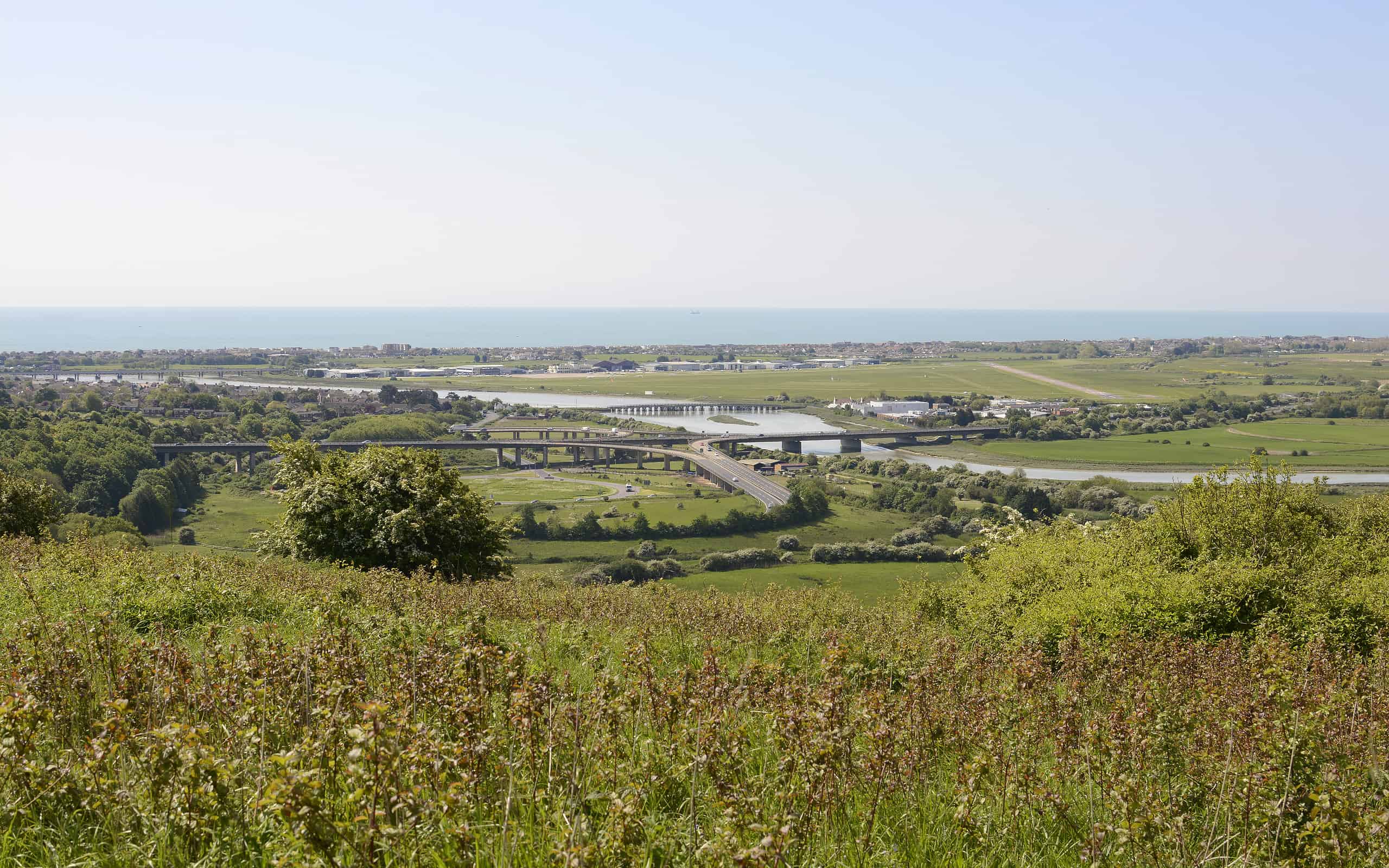
View over Shoreham Airport and the A27 flyover junction with the River Adur. West Sussex. England
©Nickos/iStock via Getty Images
Year of Establishment: 1910
Historical Significance: Shoreham Airport, also known as Brighton City Airport, lies in Shoreham-by-Sea, West Sussex. It is also the oldest licensed airport in the United Kingdom. It originally began as an airstrip used by aviation pioneers and later became a Royal Flying Corps base during World War I. After the war, it continued its role in military aviation and eventually transitioned it into civilian use.
2. London Biggin Hill Airport

Aerial view of Biggin Hill Airport on the outskirts of the London Borough of Bromley. During World War II, it was one of the Royal Air Force’s main fighter stations and played an important role during the Battle of Britain.
©AmandaLewis/iStock via Getty Images
Year of Establishment: 1917
Historical Significance: Biggin Hill Airport, located in Greater London, has its origins back in the World War I when it served as a Royal Flying Corps base. During World War II, it played a crucial role in the defense of London during the Battle of Britain. Today, it is a thriving general aviation airport.
3. London Croydon Airport
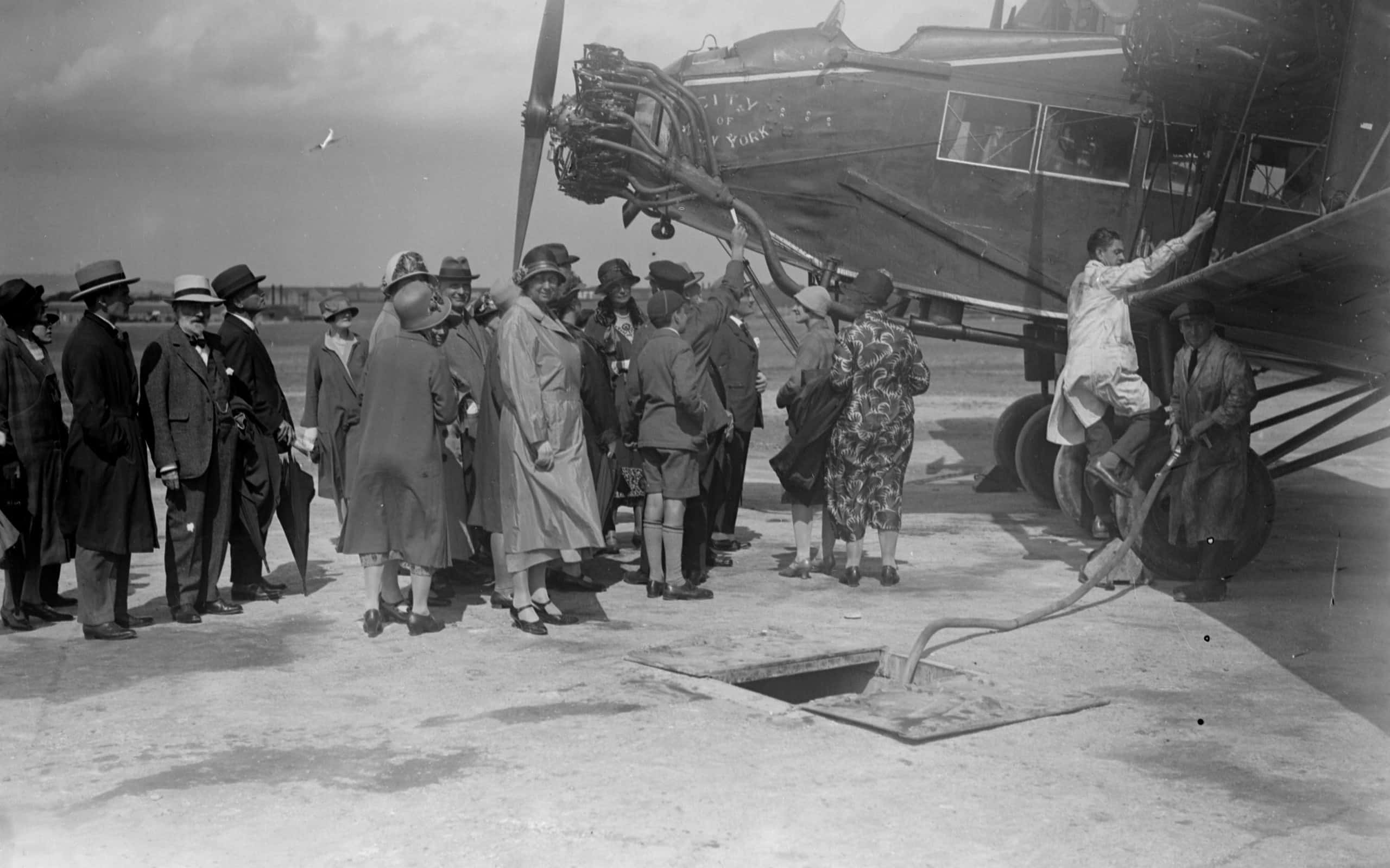
Passengers on the runway waiting to board an aircraft which is being refuelled at Croydon Airport, England.
©Fox Photos/Valueline via Getty Images
Year of Establishment: 1920
Historical Significance: London Croydon Airport, situated in Croydon, London, holds the distinction of being the United Kingdom’s first major international airport, when it was known as the London airport. It began as a modest airfield and thus, played a pivotal role in early aviation history. Renowned aviators like Amelia Earhart and Charles Lindbergh have passed through its gates.
4. London Heathrow Airport
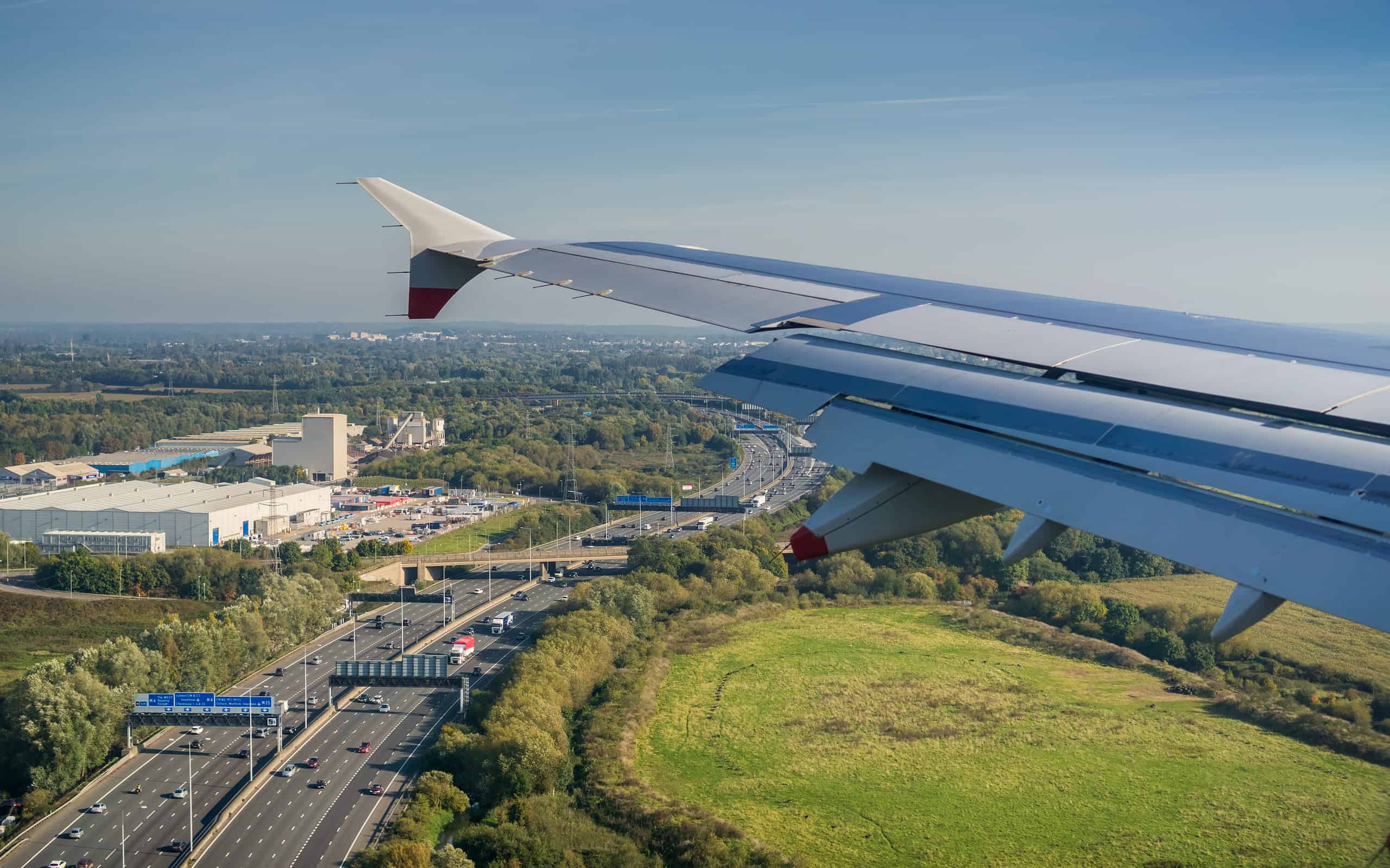
Window view of flying over the highway near Heathrow airport, London, United Kingdom
©Sundry Photography/iStock via Getty Images
Year of Establishment: 1929 (As Great West Aerodrome)
Historical Significance: Heathrow Airport, initially known as Great West Aerodrome, started as a small airfield on the outskirts of London. It gradually evolved into one of the world’s busiest and most influential international airports, connecting England to destinations worldwide.
5. Leeds Bradford Airport
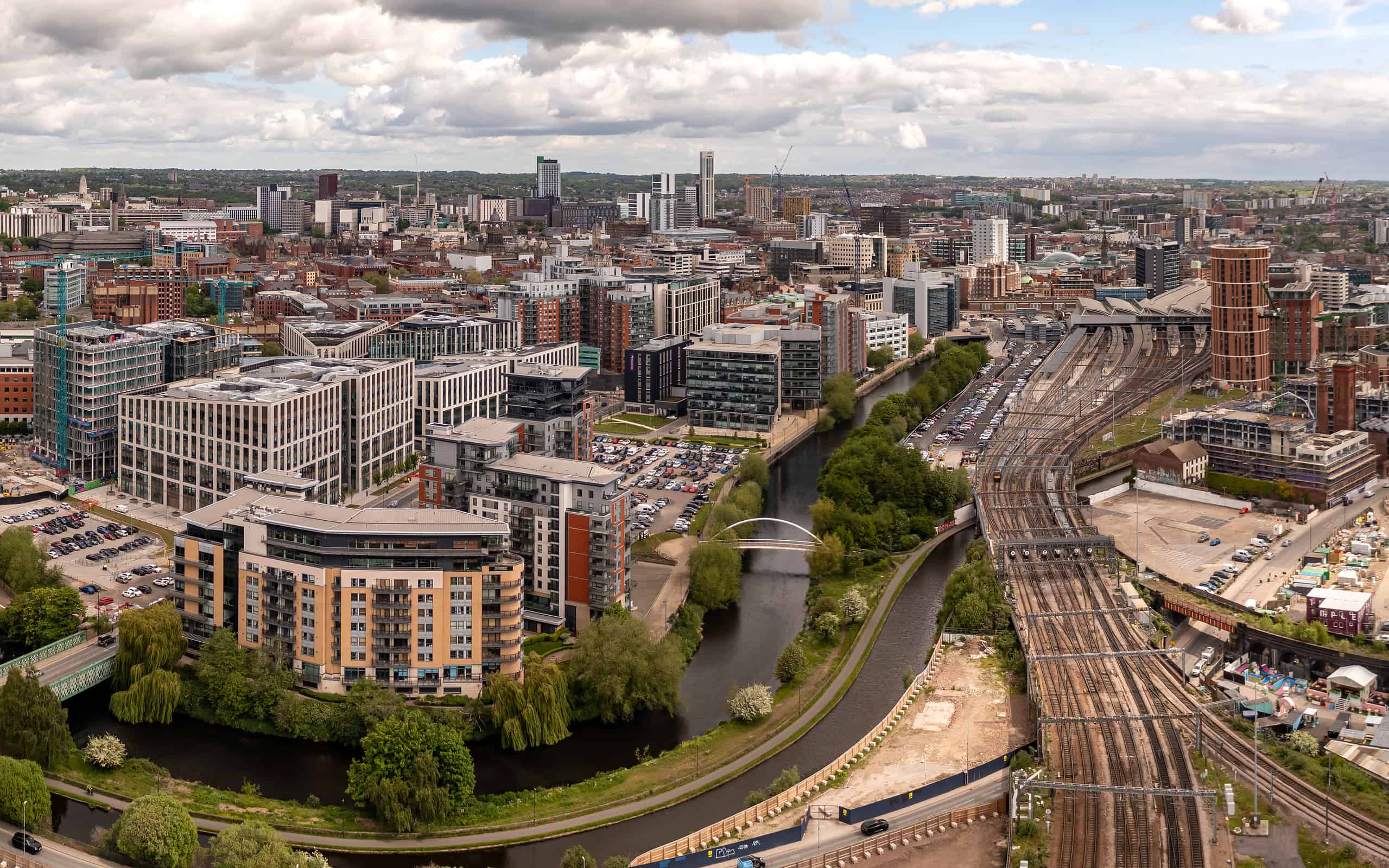
An aerial cityscape of Leeds city centre including the Leeds to Liverpool canal and train station from Whitehall business district
©Teamjackson/iStock via Getty Images
Year of Establishment: 1931 (As Yeadon Aerodrome)
Historical Significance: Leeds Bradford Airport, originally Yeadon Aerodrome, began as a military airfield and has evolved into a key airport serving the Yorkshire region. It has contributed significantly to the development of aviation in the area.
6. Southampton Airport
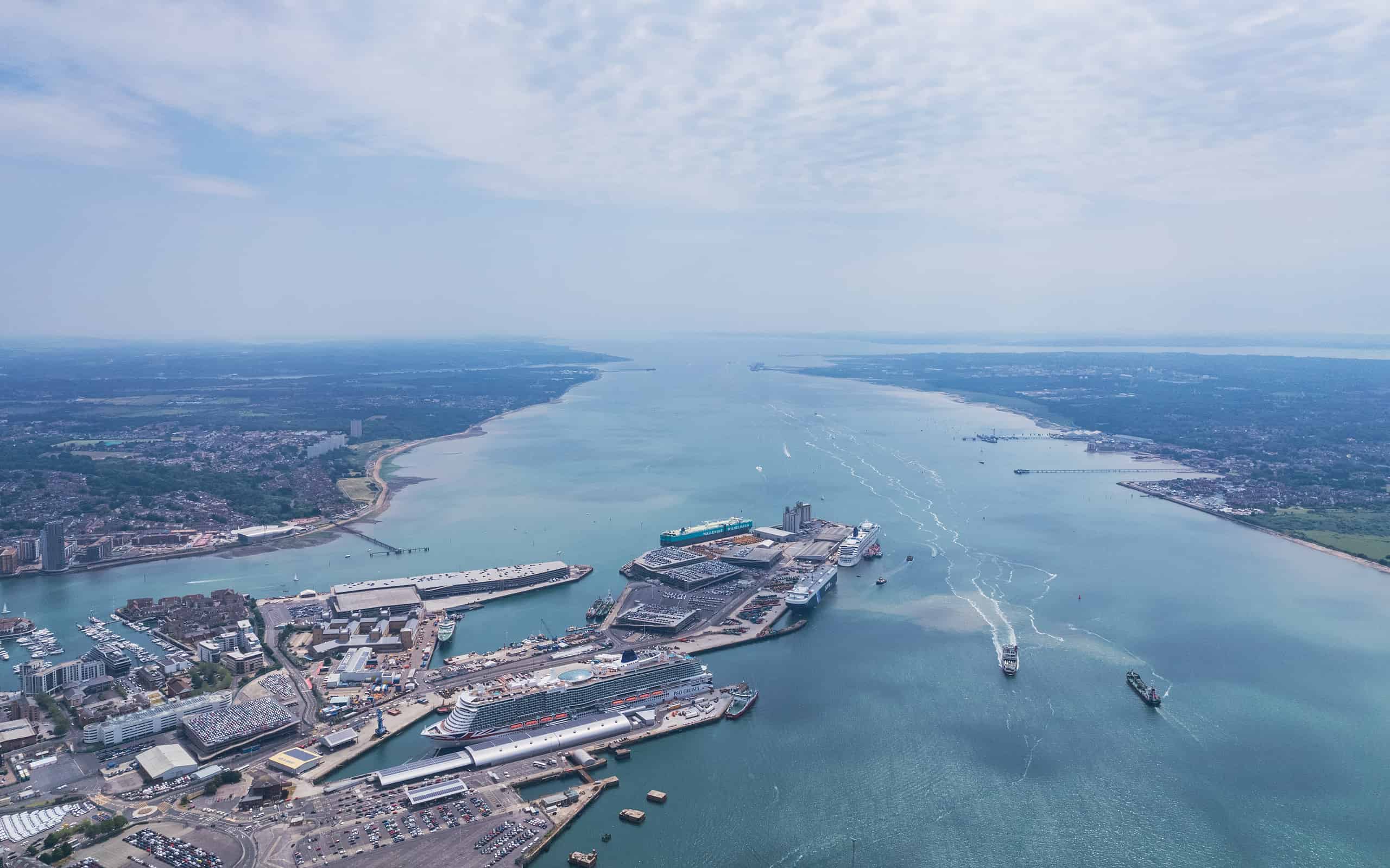
The epic aerial view of the port, dock, shipyard of the Southampton, Transportation Hub of England
©ahei/iStock via Getty Images
Year of Establishment: 1932 (As Southampton Municipal Airport)
Historical Significance: Southampton Airport, originally Southampton Municipal Airport, was established in the early 1930s as a civilian airport. Over the years, it has facilitated travel to and from the South of England.
7. Blackpool Airport

An aerial shot of Blackpool town illuminated with lights at night in England
©Wirestock/iStock via Getty Images
Year of Establishment: 1933
Historical Significance: Blackpool Airport, initially known as Squires Gate, holds the distinction of being one of the oldest aviation sites in the United Kingdom, established in 1909 before it turned into an airport in 1933.
8. Liverpool John Lennon Airport
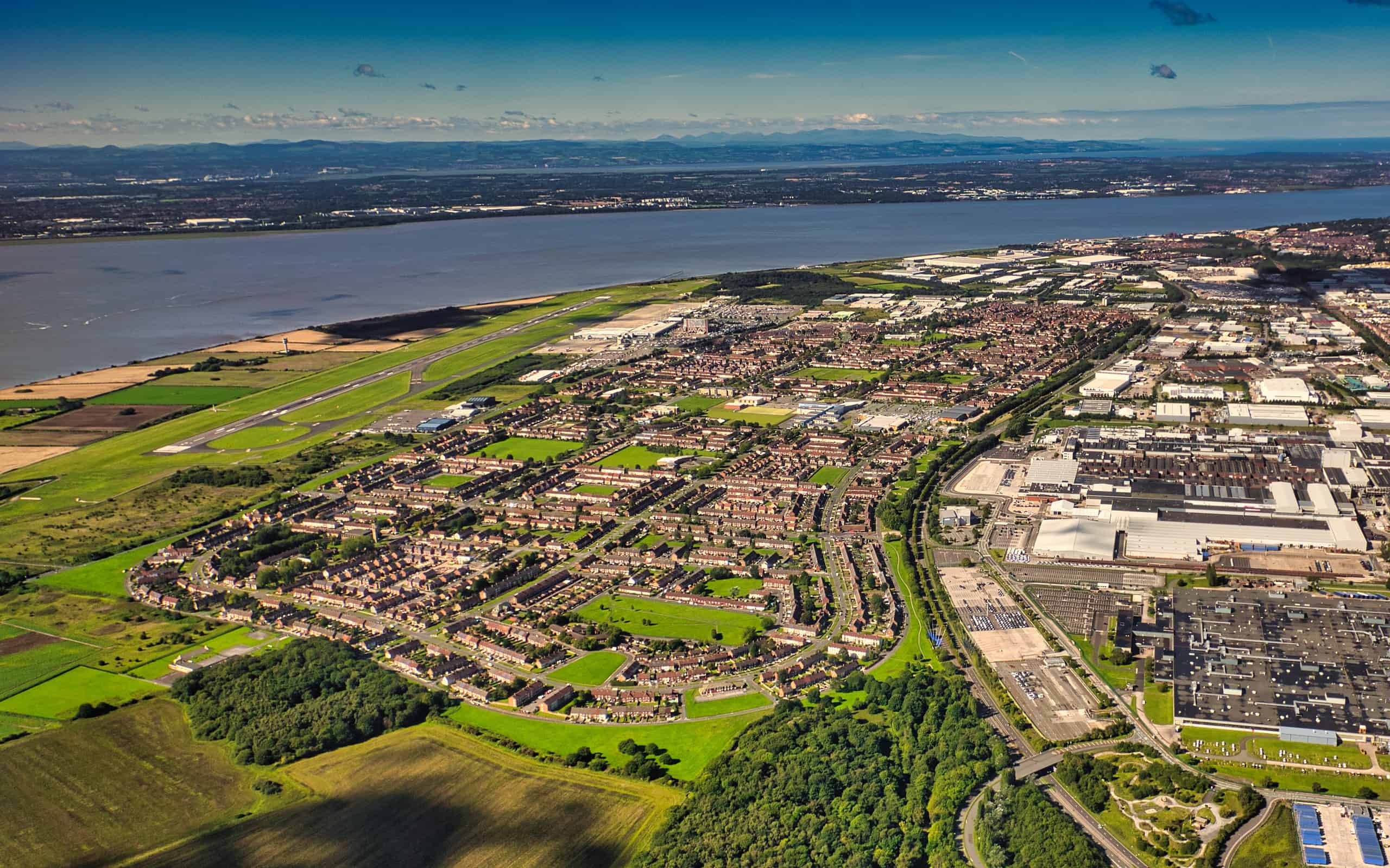
Arial shot of Speke in Liverpool with John Lennon Airport and surrounding area in view, shot in September 2020
©Andrew Robertson/iStock via Getty Images
Year of Establishment: 1933 (As Liverpool Airport)
Historical Significance: Liverpool John Lennon Airport, originally known as Liverpool Airport, was one of the first operational airports in the United Kingdom. Over the years, it has expanded its services, connecting the Northwest of England to international destinations.
9. London Gatwick Airport
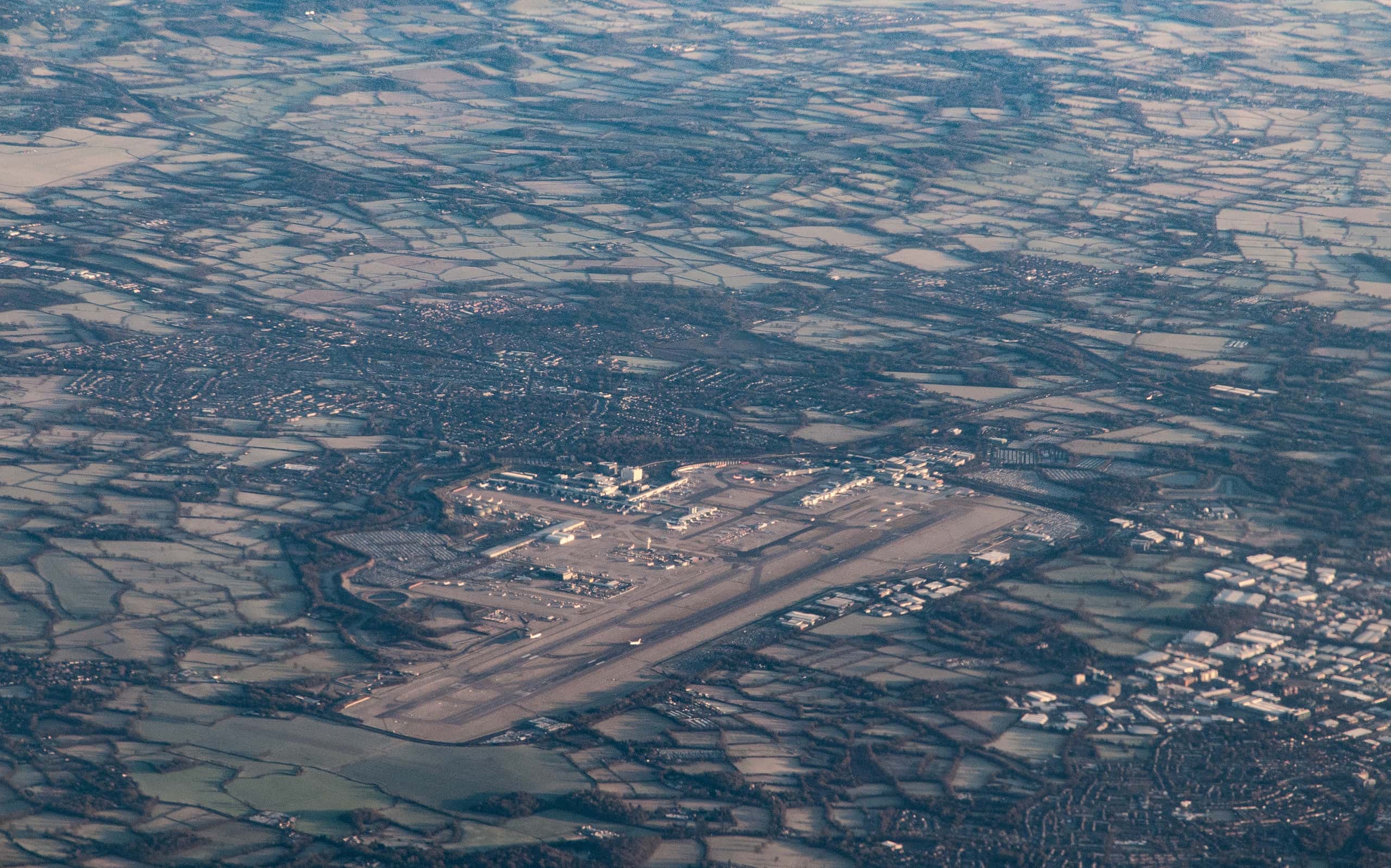
Aerial view of London Gatwick Airport and the surrounding countryside
©Wirestock/iStock via Getty Images
Year of Establishment: 1933 (As Gatwick Aerodrome)
Historical Significance: London Gatwick Airport, originally Gatwick Aerodrome, started as a small airfield. It has since transformed into one of London’s major international airports, connecting the city to a wide range of global destinations.
10. Newcastle International Airport

The city of Newcastle uponTyne and Gateshead River Tyne bridges at night, North East England.
©Anita Nicholson/iStock via Getty Images
Year of Establishment: 1935 (As Woolsington Aerodrome)
Historical Significance: Newcastle International Airport, originally Woolsington Aerodrome, has a history in early aviation. It has become a vital transportation hub for the Northeast of England, connecting the region to domestic and international destinations.
11. Exeter Airport
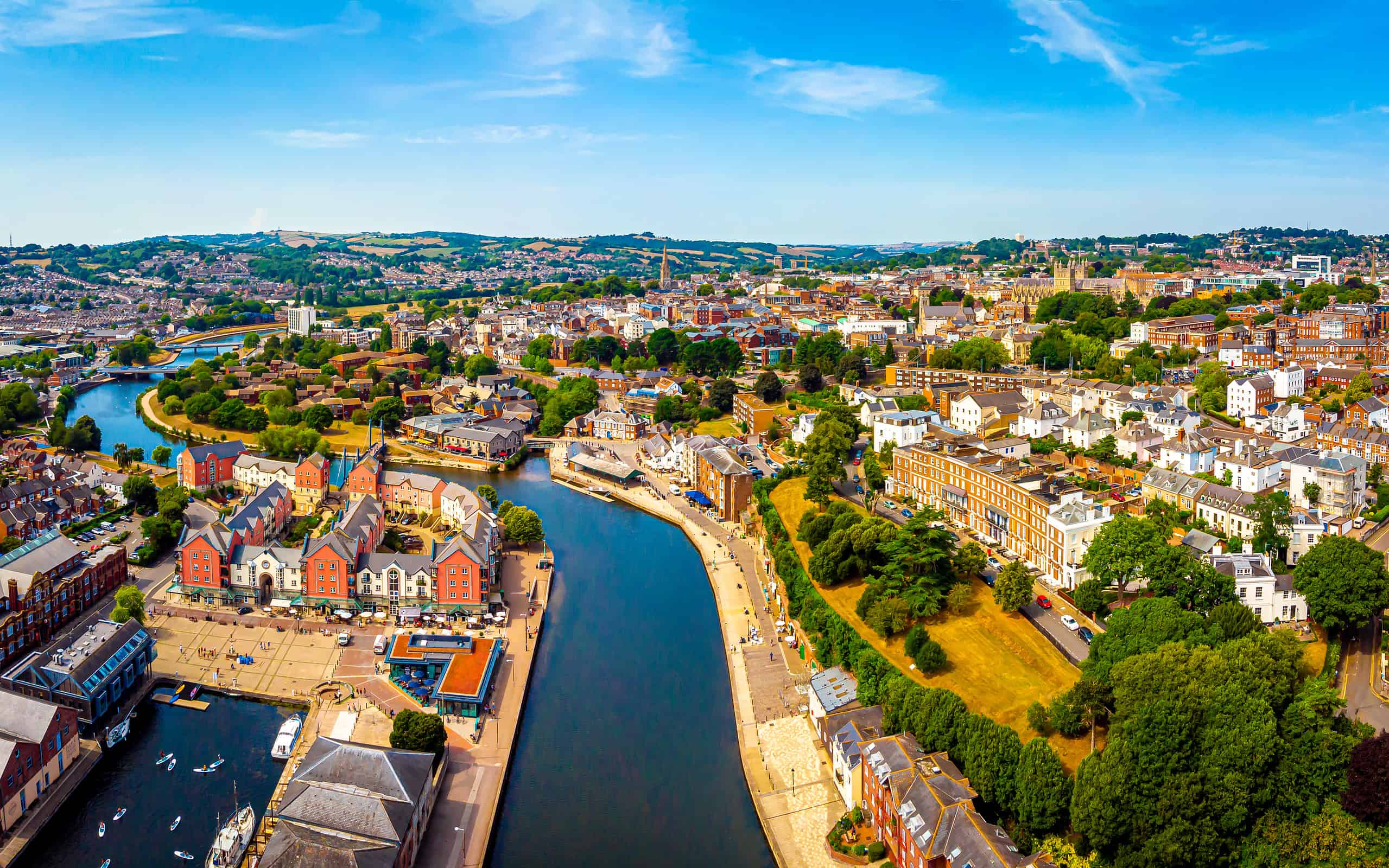
Aerial view of Exeter in summer day, UK
©Alexey_Fedoren/iStock via Getty Images
Year of Establishment: 1937 (As Exeter Municipal Airport)
Historical Significance: Exeter Airport, originally Exeter Municipal Airport, has a relatively recent history compared to some other airports on this list. It serves the Southwest of England.
12. Manchester Airport

A tunnel linking to Manchester airport terminals taken at night.
©Luke Hansen/iStock via Getty Images
Year of Establishment: 1938 (As Ringway Aerodrome)
Historical Significance: Manchester Airport, originally known as Ringway Aerodrome, was established as a municipal airport in the late 1930s. It has grown to become one of the United Kingdom’s busiest airports, serving the North of England and beyond.
13. London Luton Airport
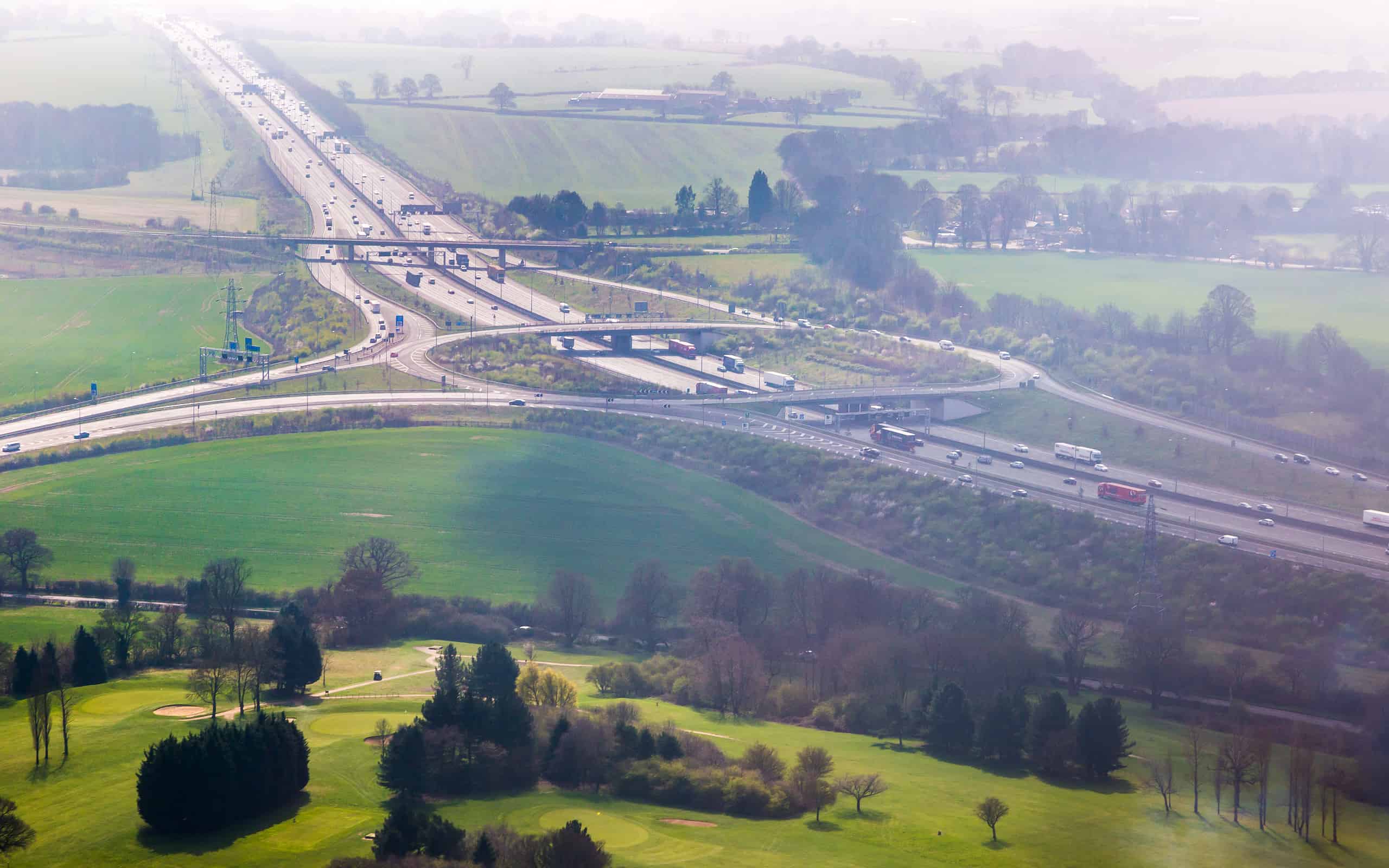
M1 motorway junction exit to Luton Airport aerial view from starting plane.Large group of cars and trucks on the road. Horizontal view
©Tommy Lee Walker/iStock via Getty Images
Year of Establishment: 1938 (As Luton Municipal Airport)
Historical Significance: London Luton Airport, initially known as Luton Municipal Airport, has grown from modest beginnings to become a significant airport serving the London area and the East of England.
14. Birmingham Airport

View from birmingham airport at sunrise
©Henry Crofts/iStock via Getty Images
Year of Establishment: 1939 (As Elmdon Airport)
Historical Significance: Birmingham Airport, initially known as Elmdon Airport, was founded just before the outbreak of World War II. It has played a vital role in connecting travelers in the Midlands region to domestic destinations as well as their international flights.
15. East Midlands Airport

Sign for exit to Stoke, Derby and East midlands airport, also Nottingham and the North
©Michael Garner/iStock via Getty Images
Year of Establishment: 1965 (As East Midlands Airport)
Historical Significance: While one of the younger airports on this list, East Midlands Airport has become an essential cargo and passenger airport serving the East Midlands region.
Role of Aviation in England
Aviation plays a vital and multifaceted role in England, impacting various aspects of the country’s economy, culture, and society. Its importance extends beyond simply enabling travel; it also influences commerce, technology, defense, tourism, and global connectivity. Here’s a more detailed exploration of the importance of aviation in England:
Economic Engine
The aviation industry in England provides employment to a substantial number of people. This includes pilots, air traffic controllers, ground crew, maintenance technicians and administrative staff.
Aviation also contributes significantly to England’s gross domestic product. It encompasses not only airlines and airports but also aircraft manufacturing, aerospace engineering and associated industries. Planes bring in tourists and goods, and can thus greatly benefit all kinds of industries. Finally, the aerospace sector, in particular, is also a vital part of the country’s economy.
Global Connectivity
Aviation facilitates international trade by connecting England to global markets, as mentioned before. Cargo and freight transported by air are crucial for time-sensitive and high-value goods, which helps support industries such as manufacturing, pharmaceuticals, and e-commerce.
England’s international airports, including Heathrow, Gatwick, and Manchester, also serve as major hubs for business travel, fostering trade relationships and foreign investments.
Tourism and Hospitality
England’s airports also serve as gateways for millions of tourists each year. The country’s rich history, cultural heritage and diverse landscapes make it a popular tourist destination. Aviation is essential for accommodating international visitors, who generally come into England through planes instead of other means, especially since the country is located on an island.
Air travel also contributes to the hospitality industry by bringing in travelers who require accommodations, dining and transportation within the country. Thus, this boosts local economies and employment.
Education and Innovation
England has several renowned aviation and aerospace education institutions. Universities and training centers provide education and research opportunities for aspiring pilots, engineers and aviation professionals.
The aviation sector in England is also at the forefront of technological innovation. England’s aerospace companies, such as BAE Systems, are leaders in developing cutting-edge aircraft engines, defense systems and space technologies.
National Defense
The RAF is a crucial component of England’s national defense. It ensures the protection of airspace, territorial integrity and national security. Without airports, this would have not been possible. Military aviation capabilities also include fighter jets, reconnaissance aircraft, and transport planes.
Thus, England’s geographic location, with its proximity to Europe and the North Atlantic, makes it strategically important for defense and surveillance purposes.
Environmental Considerations
The aviation industry is also increasingly focused on sustainability and reducing carbon emissions. Luckily, England has been working on initiatives to make aviation more environmentally friendly, including the development of alternative fuels and more fuel-efficient aircraft.
The expansion and development of airports, such as Heathrow’s third runway, also involve extensive environmental assessments and considerations due to their potential impact on local communities and ecosystems. Thus, England’s aviation industry is also a leader in the fight towards climate change.
Cultural Exchange and Diplomacy
Aviation plays a role in international diplomacy by facilitating travel for diplomats, government officials and heads of state. It also supports cultural exchange programs, student exchanges and international collaborations in fields like art, science, and education.
Emergency Response and Humanitarian Aid
In times of crisis, such as natural disasters or political unrest, aviation is also vital for evacuating citizens and providing humanitarian assistance.
Medical EvacuationsAir ambulances and medical evacuation flights are essential for swiftly transporting critically ill patients to specialized medical facilities.
Thank you for reading! Have some feedback for us? Contact the AZ Animals editorial team.








